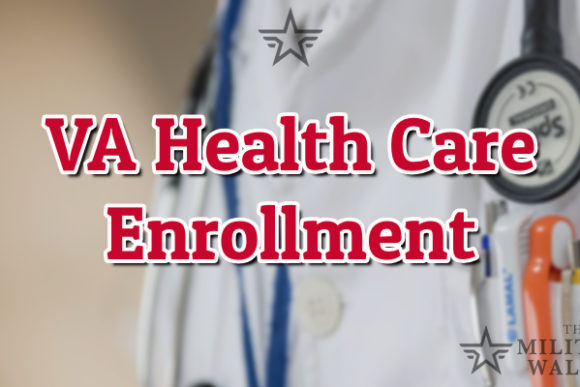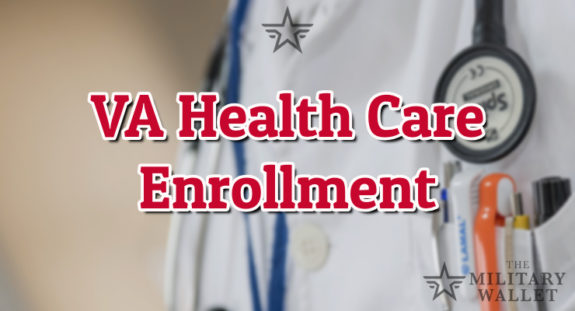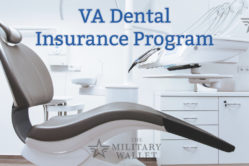This expands on this article that Ryan wrote a few years ago regarding VA health care eligibility. Please take a few minutes to read that article as it explains eligibility items in detail.
One of the biggest concerns many military veterans have during their transition is how they are going to get health insurance for themselves and their families when they leave the military. Over a recent family reunion, my cousin and I somehow got on the subject of VA benefits. Both he and I were in the service for around 5 years, with no service-connected disability ratings or combat experience. He caught me off-guard when he said he gets health care through the VA. My first response was, “wait, what?!”
This started the wheels turning and I decided to go through the process and see how it works. The VA has always been this strange monster that no one seems to fully understand, myself included, even after going through the process. Another relative of mine also worked in the VA benefits department for 30+ years. She always advised me to get into the system regardless. She was right.
I separated from the military in 2000 with a DD 214 and an honorable discharge. That was about it.
When I left the service my medical records had maybe 5 pages in it. So, it never occurred to me that I would have any VA medical benefits. Thanks to some legislation, regular non-retired vets, like you and I have some options available to us.
Table of Contents
The VA Health Care Application & Enrollment Process
To get the process going, start your Health Care Application here. It’s the online equivalent to the VA Form 10-10EZ and all the questions are straight forward.
A couple of days later you will get a call from the closest VA health care facility to set up a number of intake appointments.
For me, it was an EKG, blood work, Health Hub, intake nurse meeting, intake doctor exam, prescription drug overview, and finally a meeting with the pharmacy. This takes about a ½ day.
Here is what I went through:
- EKG took about 5 minutes — I believe this is required for anyone over 40.
- Blood and plasma test was for a whole range of items.
- Health hub was for getting signed up online to track my health, lab results, VA appointments, and prescriptions. It is called MyHealtheVet.
- The intake nurse took vitals and asked a number of questions.
- The doctor’s exam only took a few minutes because I am relatively healthy. This appointment was only for intake. If you have medical issues, you get assigned a primary care doctor. Here is the rub, followup appointments can take 2-3 months to schedule at my local VA health care facility, which seems to be common at many VA health care facilities.
- I had no prescriptions, so I did not need the prescription drug appointment.
- The pharmacy appointment was just to show me that I can purchase prescriptions for $0 to $11, depending on if it is a Brand Name or Generic.
- You will also get pamphlets and packets on your local VA facility.
From the time you finish your initial application online to when you intake, you will start getting a number of items in the mail. They are actually really quick with this. I think I saw some things in the mail within 2 days.
VA Health Care Priority Group Assignment
You will receive a Priority Group assignment after your VA health care application has been approved.
Your VA Priority Group determines what your benefits will be.
I was assigned to VA Priority Group 8c. This group basically means I have no service-connected disability and my income is over the national income limit. For my area, that is over $60,000/yr. Basically, I will have copayments for certain services. The VA Health Care Priority Groups are listed below, with a brief explanation of eligibility for each Priority Group.
With all that, services like Preventative Care, Mental Health, Inpatient Services, and others are available to my group.
- Copays for each group differs, my particular group was $0 for preventative care, $15 for primary care, and $50 for specialty care.
- Long-term care also has a copayment. You will receive additional information on that.
VA Priority Groups
The VA assigns veterans to a Priority Group, which determines, in part, their access to health care, and the cost, if any. These Priority Groups are designed to help the VA ensure those with the greatest need are able to obtain quality health care when they need it.
Priority Group 1
- Veterans with service-connected disabilities rated by VA as 50% or more disabling.
- Veterans determined by VA to be unemployable due to service-connected conditions.
- Veterans who have been awarded the Medal of Honor (MOH).
Priority Group 2
- Veterans with service-connected disabilities rated by VA as 30% or 40% disabling.
Priority Group 3
- Veterans who are former Prisoners of War (POWs).
- Veterans who have been awarded a Purple Heart medal.
- Veterans whose discharge was for a disability that was incurred or aggravated in the line of duty.
- Veterans with service-connected disabilities rated by VA as 10% or 20% disabling.
- Veterans who have been awarded special eligibility classification under Title 38, U.S.C., § 1151, “benefits for individuals disabled by treatment or vocational rehabilitation.”
Priority Group 4
- Veterans who receive aid and attendance or housebound benefits from VA.
- Veterans who have been determined by VA to be catastrophically disabled.
Priority Group 5
- Veterans with a nonservice-connected or non-compensable service-connected disability and Veterans rated by VA as 0% disabled and who have an annual income below the VA’s geographically-adjusted income limit (based on your resident ZIP code).
- Veterans receiving VA pension benefits.
- Veterans eligible for Medicaid programs.
Priority Group 6
- Veterans with a compensable 0% service-connected disability.
- Veterans exposed to ionizing radiation during atmospheric testing or during the occupation of Hiroshima and Nagasaki.
- Project 112/SHAD participants.
- Veterans of the Mexican border period or of World War I
- Veterans who served in the Republic of Vietnam between January 9, 1962, and May 7, 1975.
- Veterans of the Persian Gulf War who served between August 2, 1990, and November 11, 1998.
- Veterans who served on active duty at Camp Lejeune for at least 30 days between August 1, 1953, and December 31, 1987.
- Currently enrolled Veterans and new enrollees who served in a theater of combat operations after November 11, 1998, and those who were discharged from active duty on or after January 28, 2003, are eligible for the enhanced benefits for five years post-discharge
Priority Group 7
- Veterans with gross household income below the geographically-adjusted VA income limit for their resident location and who agree to pay copayments.
Priority Group 8
- Veterans with gross household incomes above the VA income limits and the geographically-adjusted income limits for their resident location, and who agree to pay copayments.
Veterans eligible for enrollment: Veterans who are rated with a noncompensable 0% service-connected and are:
- Subpriority a: enrolled as of January 16, 2003, and who have remained enrolled since that date and/or were placed in this subpriority due to changed eligibility status.
- Subpriority b: enrolled on or after June 15, 2009, and whose income exceeds the current VA income limits or the geographically-adjusted VA income limits by 10% or less.
Veterans eligible for enrollment: Veterans who are nonservice-connected and:
- Subpriority c: enrolled as of January 16, 2003, and who have remained enrolled since that date and/or were placed in this subpriority due to changed eligibility status.
- Subpriority d: enrolled on or after June 15, 2009, and whose income exceeds the current VA income limit and geographic income limit by 10% or less.
Veterans not eligible for enrollment: Veterans not meeting the criteria above:
- Subpriority e: noncompensable 0% service-connected (eligible for care of their service-connected condition only).
- Subpriority g: nonservice-connected.
VA Health Care Co-Payments
Some veterans may be required to pay a co-pay for the care they receive at a VA medical facility. The amount of the Co-pay, if any, is determined by your Priority Group, or whether the service is exempt from co-pay.
By law, veterans are charged a co-pay for three main reasons:
- Care not related to a service-connected illness or injury
- Their income exceeds a certain threshold, or
- Their income information is incomplete or not available.
Veterans Not Required To Make Copays
Some Veterans qualify for free healthcare and/or prescriptions based on special eligibility factors including but not limited to:
- Former Prisoner of War status
- 50% or more compensable VA service-connected disabilities (0-40% compensable service-connected may take copay test to determine prescription copay status)
- Veterans deemed catastrophically disabled by a VA provider
Services Exempt from Inpatient and Outpatient Copays
- Special registry examinations offered by VA to evaluate possible health risks associated with military service
- Counseling and care for military sexual trauma
- Compensation and Pension examinations.
- Care that is part of a VA research project
- Care related to a VA-rated service-connected disability
- Readjustment counseling and related mental health services
- Care for cancer of head or neck caused by nose or throat radium treatments received while in the military
- Individual or Group Smoking Cessation or Weight Reduction services
- Publicly announced VA public health initiatives, for example, health fairs
- Care potentially related to combat service for Veterans that served in a theater of combat operations after November 11, 1998.
- Laboratory and electrocardiograms
- Hospice care
You can learn more about VA health care co-pays here, or by contacting your local VA medical facility.
What Else to Expect when Enrolling in the VA Health Care System
A Veterans Choice Card should also be mailed to you. If you are entitled to VA benefits, you can use this card to receive services from non-VA providers. It does have some stipulations. You can find more information here.
Another important item you will receive is a Veterans Health Benefits Handbook that outlines your benefits. You want to read through this because I noticed my handbook was customized to my 8c group assignment.
In the end, you really just need to get the Heath Care Application filled out to start the process. I think you may be surprised by what you are entitled to. I know I was.





Comments:
About the comments on this site:
These responses are not provided or commissioned by the bank advertiser. Responses have not been reviewed, approved or otherwise endorsed by the bank advertiser. It is not the bank advertiser’s responsibility to ensure all posts and/or questions are answered.
MICHAEL LEE says
I’m trying to get a VA Medical Card. I don’t need medical care now! I served in the U.S. Army from 1966 thru 1969. I have my DD 214>
Dennis Clark says
I have a question. I served Active duty from 1982-1985 in the Navy Seabees, and then thirteen years in the Navy Reserves. I had V.A. health Approx. three years and then was kicked off, said that I made too much money. I just talked to my brother tonight who lives in Oregon, he served in the Navy for four years on an Aircraft Carrier, and gets all of his Medical taken care of. I served longer than he did, mine just wasn’t continuous service. I’m wondering why I can’t get any medical coverage anymore? I now have a medical issue with my Kidney, and I believe that V.A. should be helping me with this issue. I would like some kind of clarification on this matter.
James Yoder says
I am a 26 year Navy veteran currently on Medicare and Tricare for life. How do I apply for veterans benefits through the VA. I am computer Literate and I am able to apply online I just need to know where to go and what form to use
Donald LaFreniere says
I have a question about receiving benefits. I was in the U.S. Navy from 1984 until 1988, when I was honorably discharged. I served inactive duty from 1988 until 1992. I was called back to active duty for one day in 1990 after the gulf war started to make sure I was physically able to serve in case my services were needed.
My biggest thing is I have health and dental insurance. I need dental work. But my dental insurance is very weak. I had a temp cap put in, a root canal, and another temp cap. Now I have used up all my benefits for this year. So I have only temp caps in, have other dental work that needs to be done, but have no insurance left to have them completed. I also have diabetes, high cholesterol issues. There are other things about my health I would like resolved. Like being able to get into better shape so maybe I can get off all the meds I am on. But of course my medical won’t pay for that. So is there any way I can still use VA for medical and dental and maybe even vision if I have insurance through my employer? I have never used any of my VA benefits and would like to know if I am eligible for any.. Thanks Don
Jes Naber says
Best thing to to do is fill out this form to start the process. Once you start the ball rolling, you will see what bennifits you are entitled to. I am priority group 8c and I don’t recall any dental bennifits. It all comes down to what group they place you in. You can start the process here: https://www.va.gov/health-care/apply/application/introduction
James J Smith says
How is it that you know I’m a vet when nobody in the government will agnowledge my servic. I was in the army reserve 6 mo activate 5.5 yr reserv. Back in the 60s .
Tag FR 16570948 but they say all records were burnt in St. Louis fire. All I want is a DD 214 thing. Can you point me in the direction for help?
Thanks James J Smith
Jes Naber says
When you separated, you should have received a DD-214. I understand that was 50+ years ago. This article explains how to obtain your DD-214: https://themilitarywallet.com/dd-form-214-verification-of-military-service/